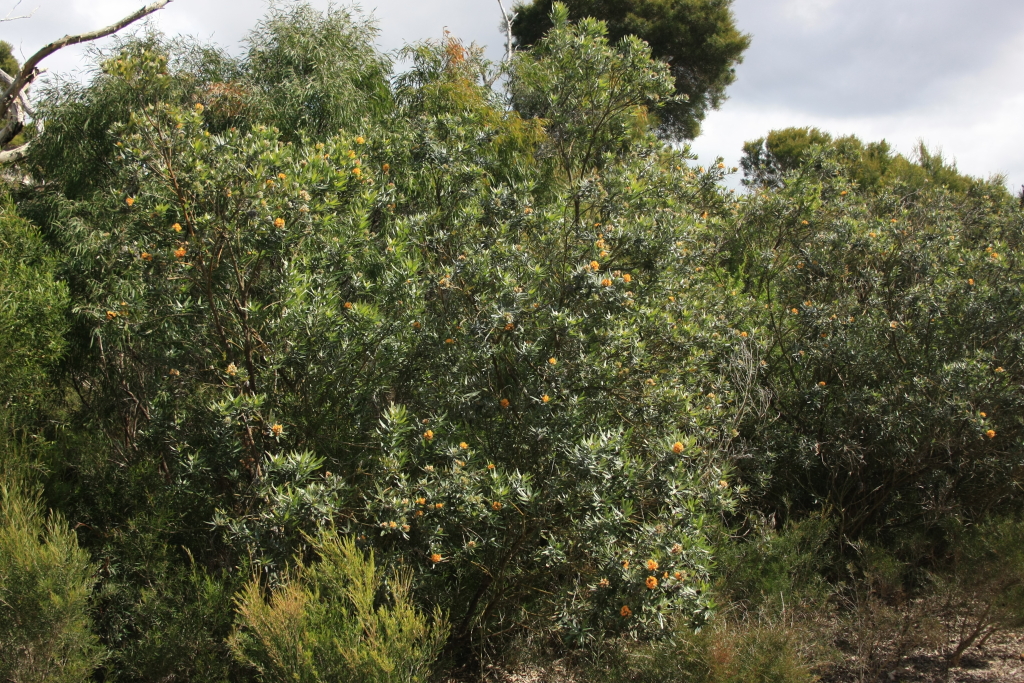Callistachys
Perennial shrubs or small trees; stems glabrescent to sparsely appressed pubescent, hairs simple, silky. Leaves alternate, opposite or whorled, simple, entire, coriaceous, reticulate-veined, upper surface glabrescent, lower surface sparsely hairy, margins flat to slightly recurved, shortly petiolate; stipules conspicuous. Inflorescence a terminal raceme, often branched, pedunculate; bracts trilobed, caducous; bracteoles caducous. Flowers pedicellate; calyx 5-toothed, teeth mostly erect, valvate, more or less equal, upper 2 wider and fused above; petals clawed, yellow to orange; standard ovate to suborbicular, emarginate, slightly longer than wings and keel; wings oblong; keel slightly curved, obtuse; stamens free, anthers uniform; ovary stipitate, style filiform, gently curved, stigma small, terminal, ovules 4 or more. Pod obloid, slightly compressed, lacking septa, sericeous, valves leathery, dehiscing in upper third; seeds minutely arillate, brown, mottled.
Possibly 2 species native to south-west Western Australia, 1 species naturalised in Victoria.
Cladistic studies (Stirton 1987) supported the reinstatement of Callistachys as a genus distinct from Oxylobium. It can be distinguished by the arborescent habit, trilobed bracts, conspicuous stipules and often branched inflorescences.
Jeanes, J.A. (1996). Fabaceae. In: Walsh, N.G.; Entwisle, T.J., Flora of Victoria Vol. 3, Dicotyledons Winteraceae to Myrtaceae, pp. 663–829. Inkata Press, Melbourne.
 Spinning
Spinning


